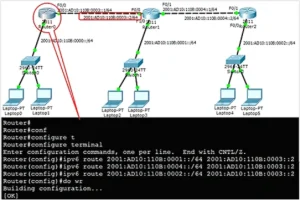Master IPv6 Route Next-Hop Option? – Eliminate Routing Blind Spots for Superior Connectivity
As we already discussed, what is a Next-Hop in the Network? The article is a routing term for the next neighboring router that a data packet can go through. The IPv6 route next-hop is along with a series of routers connected simultaneously in a network, and is the next possible destination for a data packet. […]

